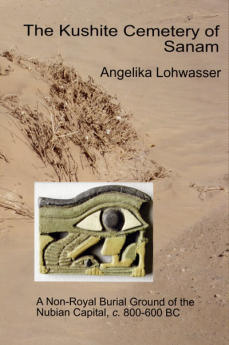The Kushite cemetery of Sanam
Egyptologist Angelika Lohwasser about the Kushite cemetery of Sanam in Ethiopia

The antique Kushite cemetery of Sanam is the main focus of the publication “The Kushite Cemetery of Sanam. A Non-Royal Burial Ground of the Nubian Capital” by Egyptologist Prof. Dr. Angelika Lohwasser from the Cluster of Excellence “Religion and Politics”. This book is the English summary of her habilitation thesis “Aspekte der napatanischen Gesellschaft. Archäologisches Inventar und funeräre Praxis im Friedhof von Sanam – Perspektiven einer kulturhistorischen Interpretation” that was awarded the Heinz Maier-Leibnitz-Preis of the Deutsche Forschungsgemeinschaft (DFG) in 2009 and published in 2012 by the Austrian Academy of Sciences (ÖAW) Press. The English version, published in 2010, addresses a broad audience by comprehensively summarizing all parts of the study, while limiting some of the detailed discussions.
In the 9th century BCE a Kushite tribe residing near Gebel Barkal in modern Sudan enlarged its sphere of control further to the north. They gained control over Egypt in the late 8th century BCE and formed the 25th Dynasty in Egypt, which ruled until 663 BCE, when they were replaced by the 26th Dynasty from the city of Sais in the Egyptian Delta and returned to Nubia.
Excavations in winter 1912/1913
The site of Sanam is situated about 25km south of the 4th cataract, vis-à-vis the sacred centre of Kush, the Gebel Barkal. Today, it is buried beneath the modern town of Merawi. The first excavation by Griffith took place in the winter of 1912/1913 and focused on three different parts: the cemetery, the temple of the Kushite king Taharqo and the more than 250m long treasury. Unfortunately, the results were never fully published, but his documentation comprises about 1600 pages of handwritten tomb-cards with sketch-drawings, the text of the tomb-cards typewritten in a revised form, 216 cards with photographs and copies of sketches, a plan of the cemetery, about 600 photographs, an envelope with clippings of articles, and a list of benefactors with the distribution of objects to museums and antiquarians. All the memoranda are preserved in the Griffith Institute in Oxford. Angelika Lohwasser’s study is based on Griffith’s documentation of these records and evaluates them, yielding a detailed view of Nubian society and the burial customs of a new African Empire.
The cemetery is the largest known non-royal burial ground from the Napatan period (8th-4th century BCE) of the Kingdom of Kush in Sudan. 1619 tombs were located in the cemetery, most of which were excavated. In general, there was only one burial per grave, in some cases accompanied by items of funerary rituals and grave goods, such as amulets, beads, jewellery, offering trays, incense burners, vessels, toiletry or weapons.
Cemetery of the inhabitants of Sanam
Based on the proximity to the royal cemetery of Nuri and the workshops found in the city of Sanam, one can assume that the cemetery of Sanam was used by the inhabitants of the city who were responsible for the administration and endowment of the pyramids of Nuri and belonged to the middle class. Social differences within this middle-class can be specified by quantity and quality of the grave goods and by the elaboration of the tomb itself.
Due to the vicinity of Nuri and Napata and some trade routes, the people had access to exquisite materials and goods. The grave goods include an unusual amount of imported material, such as semi-precious stones, ivory and precious metal.
The ethnic affiliation of the people cannot be determined. The earlier excavators tried to distinguish between Nubian and Egyptian burials. But Angelika Lohwasser’s study shows that in the case of Sanam this is not possible. One has to speak of a Napatan funerary culture, which can be characterized by three elements: 1) traditional, indigenous Nubian; 2) of Egyptian origin, already imported into the New Kingdom; 3) contemporary Egyptian elements.
Literature: Lohwasser, Angelika: The Kushite Cemetery of Sanam. A Non-Royal Burial Ground of the Nubian Capital, c. 800-600 BC, London: Golden House Publications 2010.

